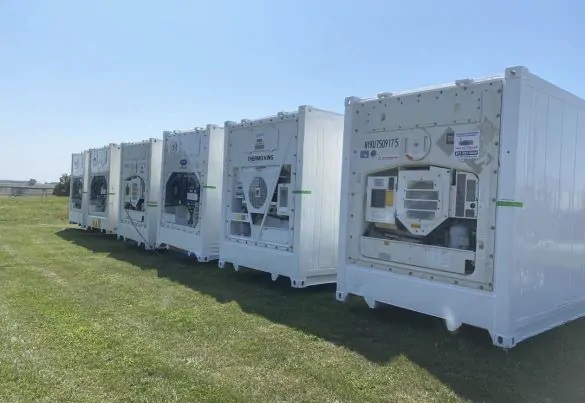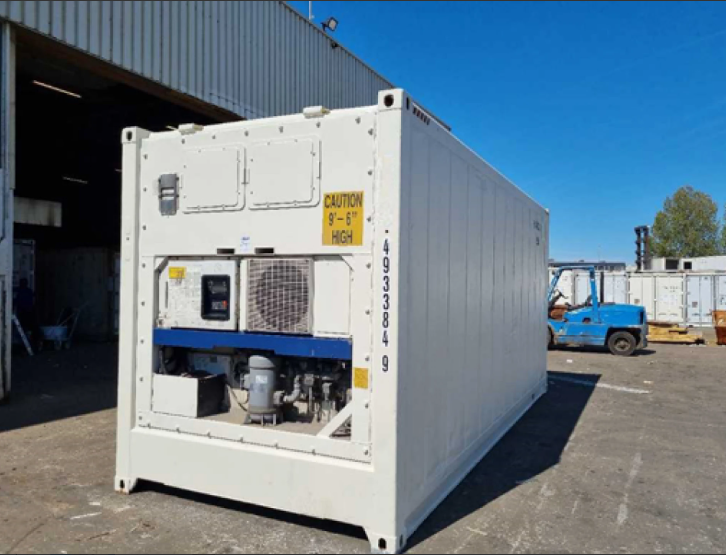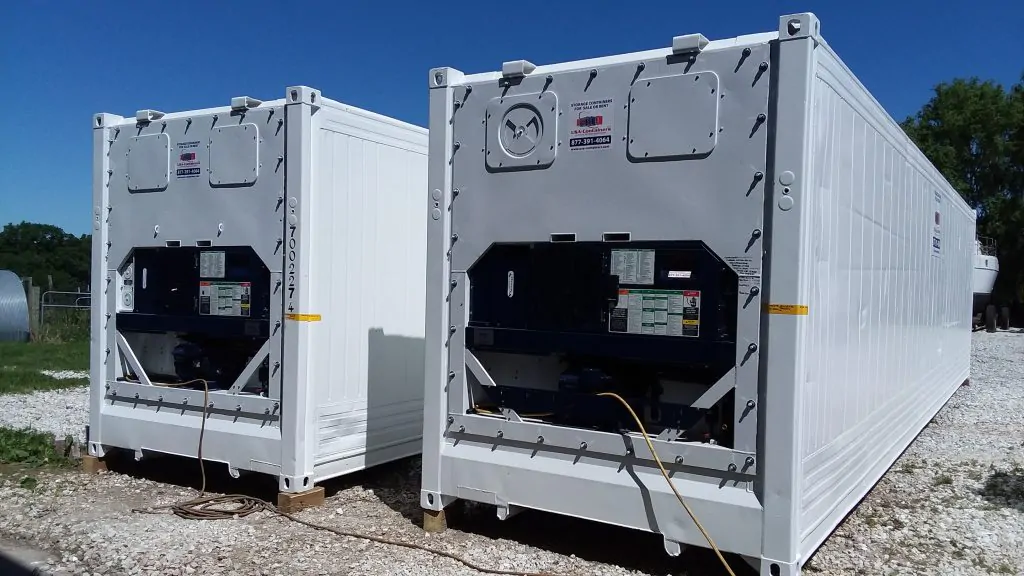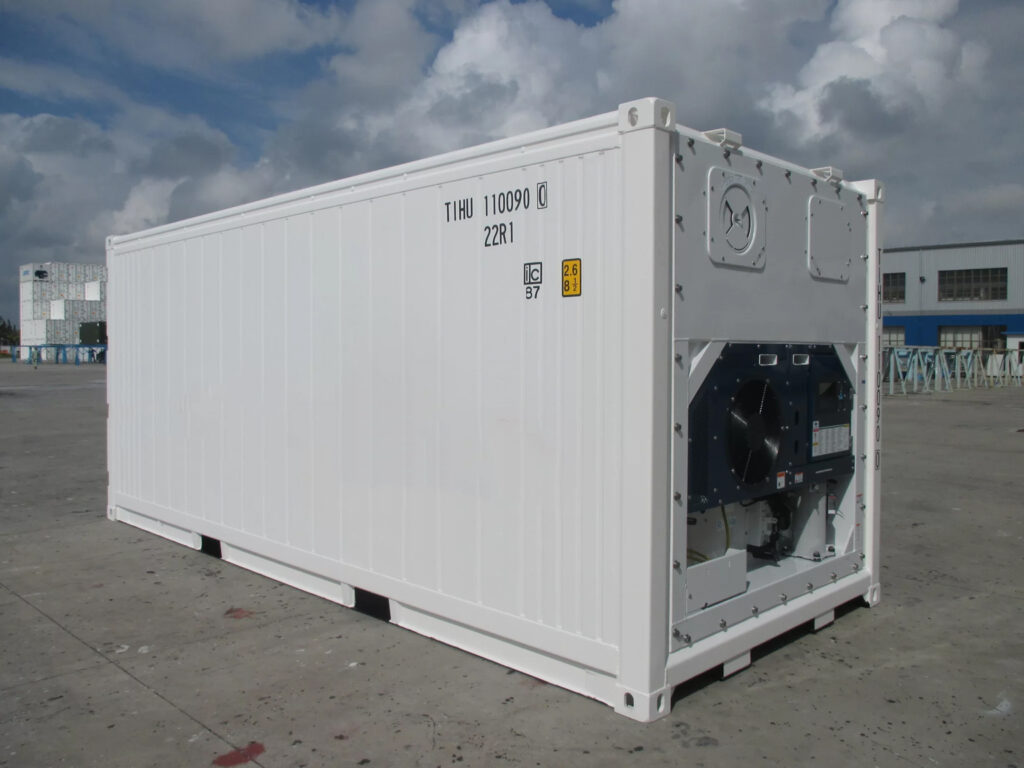Introduction
In recent years, refrigerated containers, commonly known as reefer containers, have become indispensable tools in the supply chain, particularly in rural and countryside areas. As farming and local food production become increasingly important for meeting consumer demand for fresh, quality products, the ability to store and transport these goods efficiently is crucial. This comprehensive guide aims to explore the multifaceted uses of refrigerated containers in the countryside, focusing on their benefits, applications, and the technology behind them.
1. What are Refrigerated Containers?
Refrigerated containers are specialized shipping containers equipped with refrigeration units that allow for the transport and storage of temperature-sensitive products. While traditional shipping containers are insulated, refrigerated containers take it a step further by providing climate control, ensuring that perishables remain at optimal temperatures for shipping and storage. They are widely used in various industries, including agriculture, pharmaceuticals, and food services.
Types of Refrigerated Containers
- Standard Refrigerated Containers: These are the most common type and typically come in 20-foot and 40-foot sizes. They can hold a variety of goods, from fruits and vegetables to meats and dairy products.
- High Cube Refrigerated Containers: These containers are taller than standard containers, offering more vertical space for larger items or more inventory.
- Dual-Temperature Refrigerated Containers: Designed for transporting different products simultaneously, these containers can maintain two separate temperature zones.
Technical Features
- Insulation: The walls, ceiling, and floor of refrigerated containers are insulated to minimize thermal transfer.
- Reefer Units: These are mechanical systems that provide cooling, using either vapor compression—similar to home refrigerators—or cryogenic cooling methods.
- Monitoring Systems: Advanced containers are equipped with monitoring systems that can track temperature, humidity, and other conditions, providing real-time data to the suppliers and the end customer.
2. The Importance of Refrigerated Containers in the Countryside
In the countryside, communities often face unique challenges related to food production and distribution. The vast distances from cities, combined with limited access to infrastructure, make it essential to have efficient solutions for transporting and storing perishable goods.
Supporting Local Food Systems
The farm-to-table movement is gaining momentum, with consumers increasingly interested in sourcing food locally. Refrigerated containers play a crucial role in this paradigm shift, as they facilitate the transportation of farm-fresh products to local markets, restaurants, and consumers without compromising quality.
Enabling Seasonal Harvests
In many rural areas, farmers experience seasonal peaks in production. Refrigerated containers provide a means to store excess produce during peak harvests, allowing farmers to sell their products throughout the year.
3. Key Benefits of Using Refrigerated Containers
3.1 Enhanced Product Freshness
One of the most significant advantages of refrigerated containers is their ability to maintain optimal temperatures for a wide range of perishable products. By extending the shelf life of these goods, farmers and distributors can ensure that consumers receive fresher products, which ultimately leads to higher customer satisfaction.
3.2 Flexible Storage Solution
Refrigerated containers offer farmers and small businesses the flexibility to store goods on-site or close to their production areas. This makes it easier for them to manage inventory and respond to fluctuating market demands efficiently.
3.3 Cost-Effectiveness
Investing in refrigerated containers can be more economical in the long term compared to renting refrigerated storage space. Moreover, with the rising costs associated with food waste, using refrigerated containers can help mitigate these expenses significantly.
3.4 Reduced Waste
Food waste is a pressing issue, especially in rural areas where logistics can complicate the distribution of perishables. By employing refrigerated containers, businesses can extend the shelf life of their products, thus reducing waste significantly.
4. Applications of Refrigerated Containers in Countryside
4.1 Agriculture and Food Production
Refrigerated containers are primarily used for agriculture and food production. They allow local farmers to store fruits, vegetables, dairy, and meats at the ideal temperatures, helping them avoid spoilage and ensuring a supply of fresh produce.
Example
A small organic farm in a rural area may utilize a refrigerated container to store seasonal produce. During peak harvest time, the farmer can pick more fruits and vegetables than needed for immediate sale, thereby using the container to preserve the quality of his product until it can be sold.
4.2 Transportation of Goods
Refrigerated containers can travel over long distances, making them perfect for transporting perishable goods from rural areas to urban markets or processing facilities. They can be loaded onto trucks or trains and ensure that products arrive at their destination in optimal condition.
Example
A dairy farm may use refrigerated containers to ship milk to processing plants across the state, ensuring that the milk remains fresh and safe for consumption.
4.3 Emergency Relief and Disaster Recovery
In times of natural disasters or emergencies, refrigerated containers can be deployed rapidly to store and distribute food and medical supplies. Their ability to maintain temperature control is essential for food safety and maintaining the efficacy of pharmaceuticals.
5. Choosing the Right Refrigerated Container
When selecting a refrigerated container, various factors should be considered, including size, temperature range, and features suited to specific needs. Reefer container
Factors to Consider
- Size: Determine how much storage space you’ll need and choose between 20-foot and 40-foot containers.
- Temperature Range: Different products require different temperature settings. Be sure to select a container that can accommodate the appropriate temperature range for your goods.
- Condition: Always inspect the container for damage and ensure the refrigeration unit is functional before making a purchase.
- Accessibility: Depending on where you plan to use the container, consider accessibility for trucks or other transport vehicles.
6. Maintenance and Care of Refrigerated Containers
To ensure the longevity and effectiveness of refrigerated containers, regular maintenance is essential.
Regular Inspection
Perform regular checks on the refrigeration unit, insulation, and overall structural integrity of the container. Look for signs of wear and tear, such as damaged seals or rusted areas.
Cleaning
Keep the interior of the container clean and sanitized. This is especially important when storing food-related products to prevent contamination.
Temperature Monitoring
If utilizing advanced monitoring systems, make sure they are calibrated correctly and functioning as intended.
7. Case Studies: Successful Use of Refrigerated Containers in Rural Areas
Case Study 1: Local Farmer’s Cooperative
A group of farmers in a rural community banded together to purchase a refrigerated container. They pooled resources and shared the container for local farmer’s market deliveries. This collaboration allowed them to maintain high-quality produce and sell their goods more effectively.
Case Study 2: Emergency Response in Natural Disasters
In the wake of severe flooding in a rural area, local authorities utilized refrigerated containers to store food supplies and medical necessities. The temperature-controlled containers ensured the integrity of perishable goods and facilitated efficient distribution to those in need.
8. Conclusion
The utilization of refrigerated containers in the countryside offers a transformative solution for farmers, suppliers, and communities. With their ability to maintain the freshness of perishable goods, reduce waste, and provide flexible storage solutions, refrigerated containers are becoming essential components of modern supply chains. As rural communities continue to develop stronger local food systems, the importance of these containers in supporting agricultural viability and food security cannot be overstated. Embracing this technology ultimately leads to more sustainable practices and enriching local economies, ensuring that consumers can enjoy fresh products straight from the farm to their tables.






